
How to Use Sensor Sudut Setir Mobil: Examples, Pinouts, and Specs
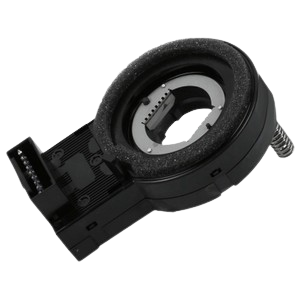
 Design with Sensor Sudut Setir Mobil in Cirkit Designer
Design with Sensor Sudut Setir Mobil in Cirkit DesignerIntroduction
The Sensor Sudut Setir Mobil is a specialized sensor used in vehicles to measure the angle of the steering wheel. This data is crucial for various automotive systems, including electronic stability control (ESC) and advanced driver-assistance systems (ADAS). By providing real-time feedback on the steering wheel's position, the sensor helps enhance vehicle safety and performance.
Explore Projects Built with Sensor Sudut Setir Mobil
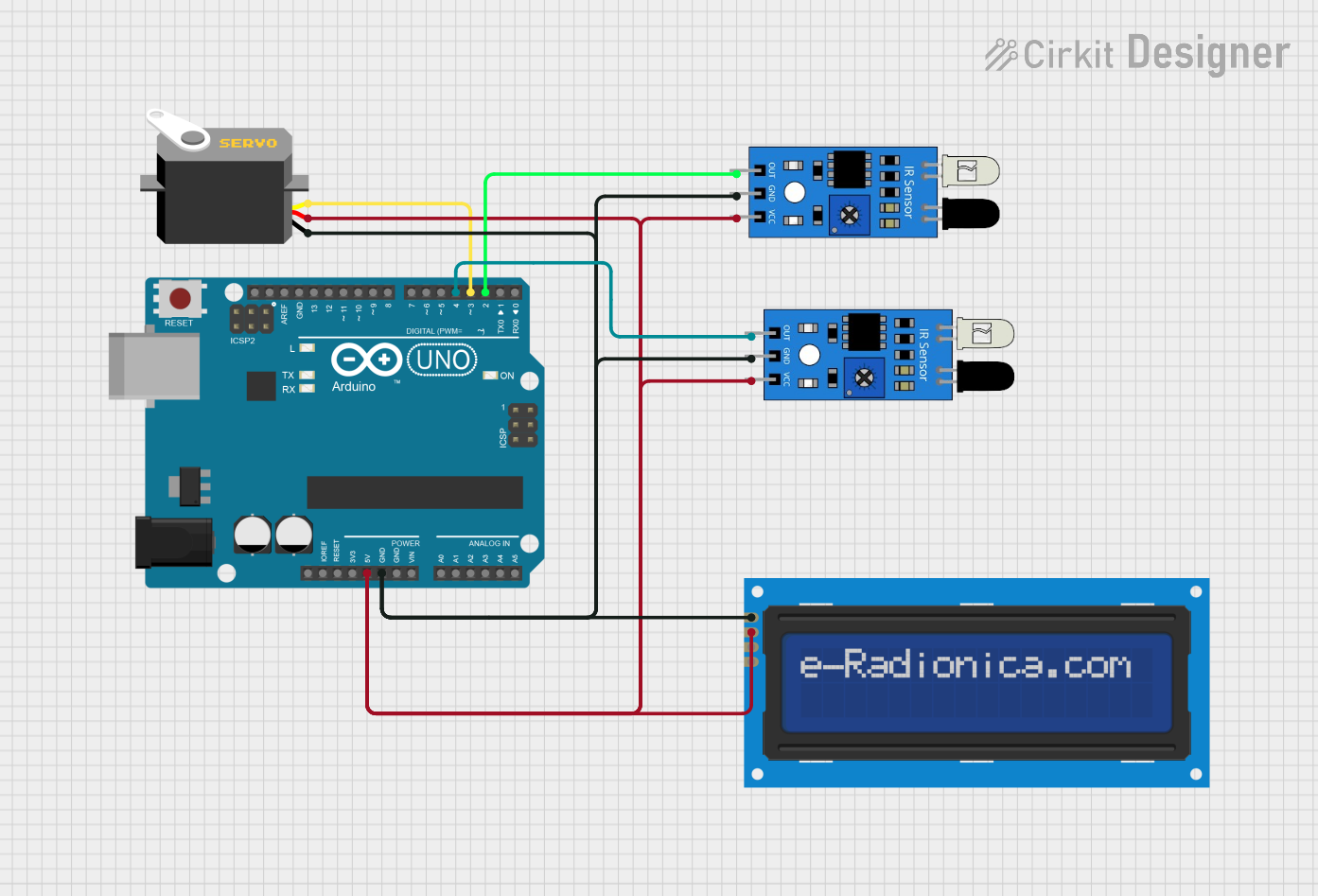
 Open Project in Cirkit Designer
Open Project in Cirkit Designer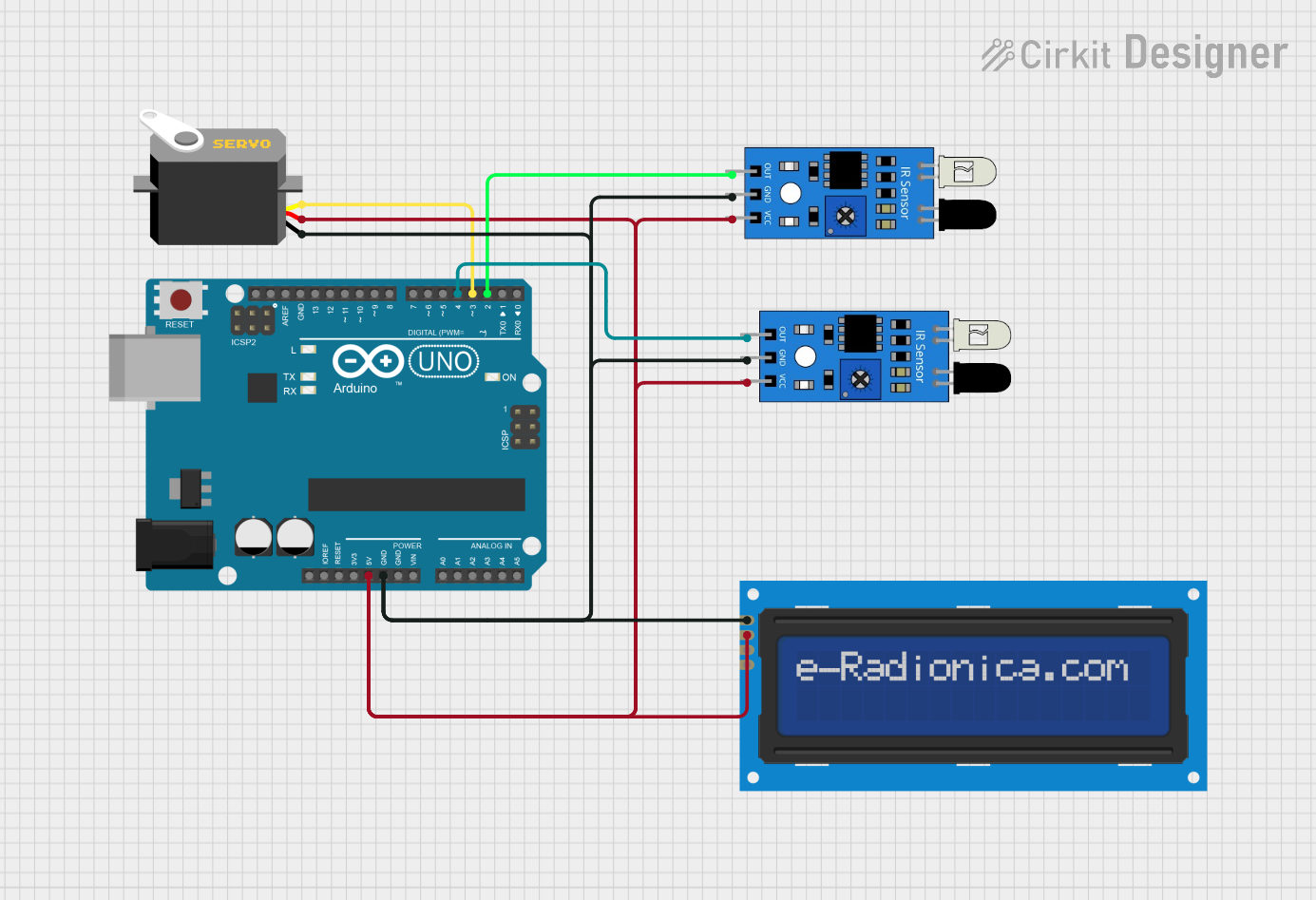
 Open Project in Cirkit Designer
Open Project in Cirkit Designer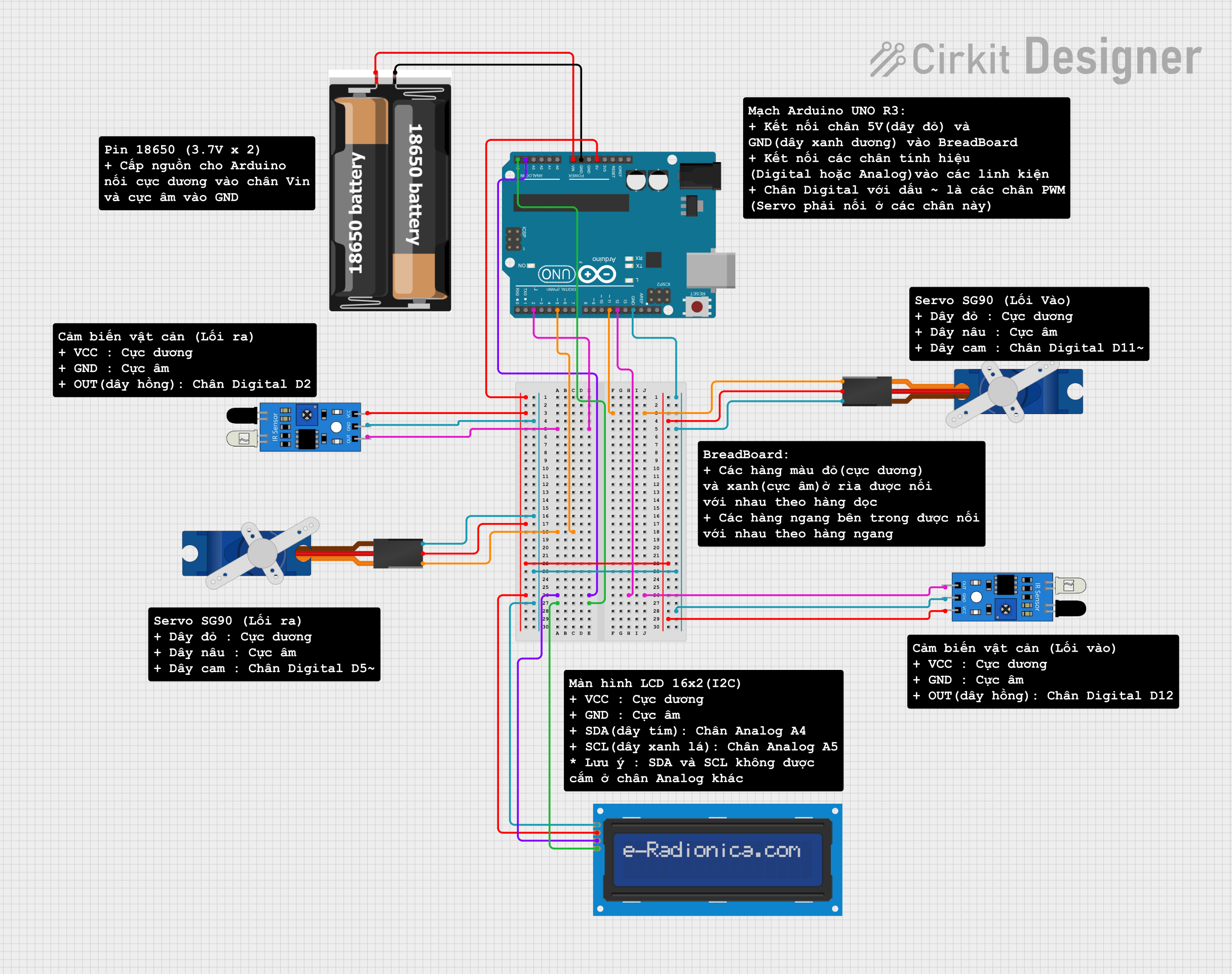
 Open Project in Cirkit Designer
Open Project in Cirkit Designer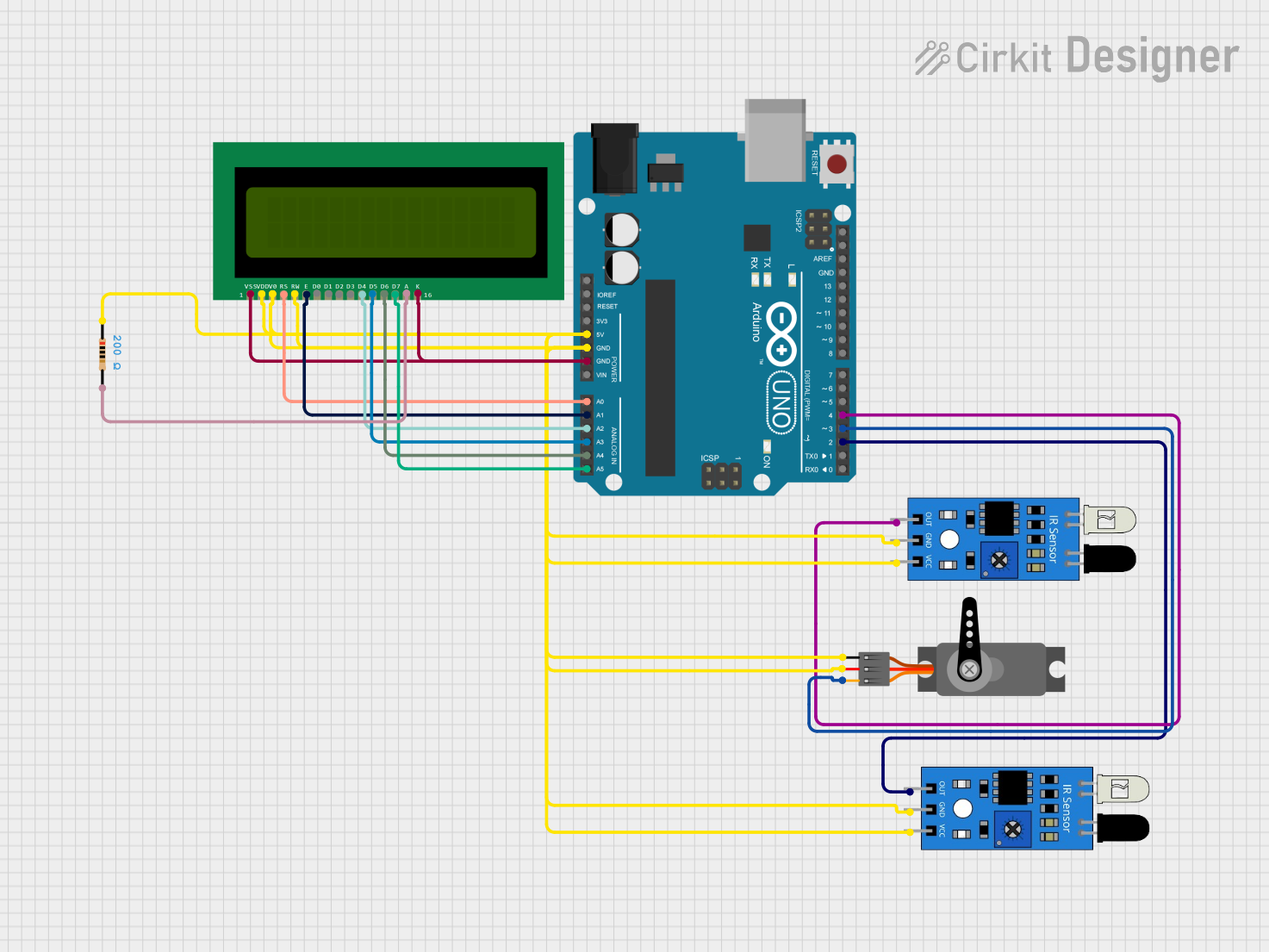
 Open Project in Cirkit Designer
Open Project in Cirkit DesignerExplore Projects Built with Sensor Sudut Setir Mobil

 Open Project in Cirkit Designer
Open Project in Cirkit Designer
 Open Project in Cirkit Designer
Open Project in Cirkit Designer
 Open Project in Cirkit Designer
Open Project in Cirkit Designer
 Open Project in Cirkit Designer
Open Project in Cirkit DesignerTechnical Specifications
Key Technical Details
| Parameter | Value |
|---|---|
| Supply Voltage | 5V DC |
| Operating Current | 10mA |
| Output Signal | Analog (0-5V) |
| Measurement Range | -720° to +720° |
| Resolution | 0.1° |
| Operating Temperature | -40°C to 85°C |
| Connector Type | 3-pin (VCC, GND, OUT) |
Pin Configuration and Descriptions
| Pin Number | Pin Name | Description |
|---|---|---|
| 1 | VCC | Power supply (5V DC) |
| 2 | GND | Ground |
| 3 | OUT | Analog output signal (0-5V) |
Usage Instructions
How to Use the Sensor in a Circuit
- Power Supply: Connect the VCC pin to a 5V DC power supply.
- Ground Connection: Connect the GND pin to the ground of the circuit.
- Signal Output: Connect the OUT pin to an analog input pin on a microcontroller (e.g., Arduino UNO).
Example Circuit Diagram
+5V (Arduino) ----> VCC (Sensor)
GND (Arduino) ----> GND (Sensor)
A0 (Arduino) ----> OUT (Sensor)
Arduino UNO Example Code
// Sensor Sudut Setir Mobil Example Code
// This code reads the analog output from the sensor and prints the steering
// angle to the Serial Monitor.
const int sensorPin = A0; // Analog pin connected to the sensor's OUT pin
int sensorValue = 0; // Variable to store the sensor value
float steeringAngle = 0; // Variable to store the calculated steering angle
void setup() {
Serial.begin(9600); // Initialize serial communication at 9600 baud
}
void loop() {
sensorValue = analogRead(sensorPin); // Read the analog value from the sensor
steeringAngle = map(sensorValue, 0, 1023, -720, 720); // Map the value to the
// steering angle range
Serial.print("Steering Angle: ");
Serial.print(steeringAngle);
Serial.println(" degrees");
delay(100); // Wait for 100 milliseconds before the next reading
}
Important Considerations and Best Practices
- Power Supply: Ensure a stable 5V DC power supply to avoid inaccurate readings.
- Calibration: Calibrate the sensor periodically to maintain accuracy.
- Environment: Avoid exposing the sensor to extreme temperatures or moisture.
- Wiring: Use short and shielded cables to minimize noise and interference.
Troubleshooting and FAQs
Common Issues and Solutions
Inaccurate Readings:
- Solution: Check the power supply voltage and ensure it is stable at 5V. Recalibrate the sensor if necessary.
No Output Signal:
- Solution: Verify all connections, especially the VCC and GND pins. Ensure the sensor is properly powered.
Fluctuating Readings:
- Solution: Use shielded cables and keep them as short as possible. Check for any sources of electromagnetic interference nearby.
FAQs
Q1: Can the sensor be used with a 3.3V microcontroller?
- A1: No, the sensor requires a 5V DC power supply for accurate operation.
Q2: How often should the sensor be calibrated?
- A2: Calibration frequency depends on usage and environmental conditions. Generally, calibrate the sensor every 6 months.
Q3: What is the maximum steering angle the sensor can measure?
- A3: The sensor can measure steering angles from -720° to +720°.
Q4: Can the sensor be used in outdoor environments?
- A4: The sensor is designed for automotive use and can operate in a wide temperature range, but it should be protected from direct exposure to moisture.
By following this documentation, users can effectively integrate the Sensor Sudut Setir Mobil into their automotive systems, ensuring accurate and reliable steering angle measurements.